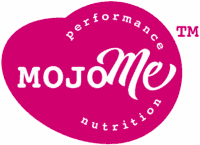Being overweight is often associated with chronic heart disease, diabetes and cancer. Intermittent fasting (IF) is currently the world’s most popular health and fitness trend. Research shows that intermittent fasting can result in accelerated weight loss,[*] improved metabolic health and energy levels while contributing to a healthier immune system and longevity.[*] #hellomojo
What is Intermittent Fasting (IF)
Intermittent fasting, in simple terms, means controlling when you eat and when you don’t. It involves adopting an eating pattern where you cycle between periods of fasting and eating. During your fasting window, you should not consume anything other than water or low-calorie (less than 50 calories) hydration.
Intermittent fasting (IF) does not specify which foods to eat, but rather when you should eat them.
There are several variations of intermittent fasting methods, all of which split the day or week into eating periods and fasting periods.
The most popular IF method is 16:8. People who follow this eating cycle fast for 16 hours a day and consume all of their calories during the remaining 8 hours
Fasting has been practised since the evolution of humankind. Ancient hunter-gatherers didn’t have access to supermarket shelves, and humans have since evolved to function without food for extended periods.
Intermittent Fasting (IF) Methods
Several different and easy ways of incorporating intermittent fasting into your daily meal plans exist. All methods involve splitting the day or week into periods of eating only during set times and fasting days.
During your fasting period, you must remain hydrated but must eat virtually nothing at all.
These are the three most popular IF methods:
- 16:8 method: The 16:8 diet plan involves skipping breakfast and restricting your eating period to 8 hours per day. Such as 12h00–20h00 and fasting for the remaining 16 hours.
- Eat-Stop-Eat: This method involves fasting for 24 hours for one or two alternate days per week.
- 5:2 diet: This involves restricting your calorie intake to between 500–600 calories on two non-consecutive days and eating normally for the remaining five days of the week.
Each of these methods should result in long term weight loss, provided that you don’t compensate by indulging in unhealthy foods (sugar, processed foods and empty carbs) or binge eating during your eating window.
The 16:8 intermittent fast is the most popular IF method because its the simplest, most sustainable and most straightforward.
The Benefits of IF
1. Fat-Loss
Intermittent fasting can help both active and overweight adults lose body fat effectively. Human intervention trials have found that intermittent fasting significantly reduces body weight[*] by burning stored body fat for energy instead of relying on sugar.
In almost any type of fasting, weight loss naturally results because you consume fewer calories while burning fat for fuel.
2. Improved Blood Sugar Regulation
Intermittent fasting can improve insulin sensitivity [*]. Lower insulin levels make stored body fat a more accessible energy source. [*]
3. Lower Blood Pressure
Intermittent fasting can help reduce blood pressure. Recent studies show that restricting your eating habits to a smaller time frame causes weight loss and helps lower blood pressure[*].
4. Improved Heart Health
Research shows regular fasting linked to longevity with a lower incidence of heart failure in cardiac patients. Even one fast a month, when done over a lifetime, can profoundly affect your heart’s health [*].
5. Improved Cognitive Function
Intermittent fasting can improve brain function and boost mental focus.
- Protect your brain by reducing oxidative damage to cellular proteins, lipids, and nucleic acids
- Elevate levels of BDNF, a vital neurotrophin needed for synaptic plasticity
6. Boost Human Growth Hormone (HGH):
Intermittent fasting skyrockets your level of growth hormone. [*]Optimal levels of HRG boost muscle strength and repair, improve immunity, and reduce excess body and belly fat improving your health and daily vitality.
7. Improved Metabolic Health:
Research shows intermittent fasting can improve metabolic profiles. Improved metabolic health reduces your risk of obesity and developing obesity-related non-alcoholic fatty liver disease, diabetes and cancer[*].
How to Get Started with Intermittent Fast 16:8
1. Select Your Fasting Window
Choose your preferred 16 hours for fasting. The most straightforward approach is having dinner before 20h00, skipping breakfast in the morning and not eating only after 12h00.
2. Enjoy Healthy Meals During Your Eating Window
Poor diet choices during your eating time can defeat your health, energy and weight-loss objectives. It’s important to avoid refined sugar, gluten, and processed foods and empty calories as much as possible.
3. Stay Hydrated
Improper hydration during fasting can lead to dehydration and related problems. Staying hydrated throughout your fasting period is essential by drinking water and low-calorie beverages (less than 50 calories).
4. Follow a Low Carb Diet Between Fasting Periods
You don’t need to follow a low-carb or ketogenic lifestyle to enjoy the benefits of intermittent fasting. Restricting your carbohydrates while increasing your intake of healthy fats and protein will reduce hunger and make fasting easier and more sustainable. Healthy fats and protein are more satiating and will keep you feeling fuller for longer, helping you to avoid cravings. A low-carb lifestyle may also help you lose weight and impact the reversal of type 2 diabetes.
Intermittent Fasting (IF) and Keto
A ketogenic lifestyle, also known as keto, is very low in carbohydrates (5%), moderate in protein (25%) and high in healthy fats (70%). It promotes reducing your intake of carbohydrates to an absolute minimum and replacing them with healthy fats to put your body into a metabolic state known as ketosis. The state of ketosis means that your body burns stored body fat instead of glucose for energy.
When combined, intermittent fasting and keto accelerate the depletion of stored glucose and create a fat-burning powerhouse. If you are pregnant or breast feeding you should always consult with your health provider before adopting dietary changes.
